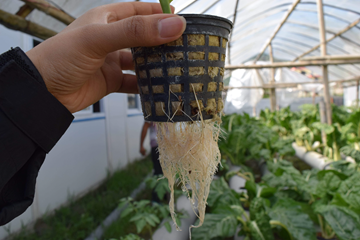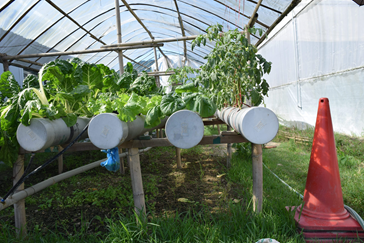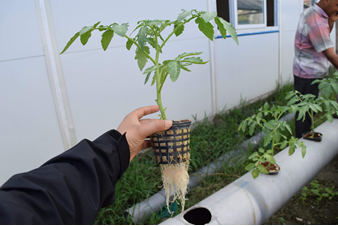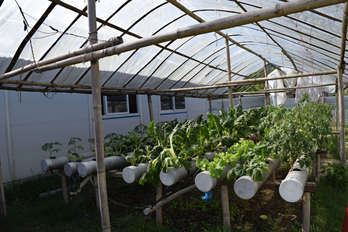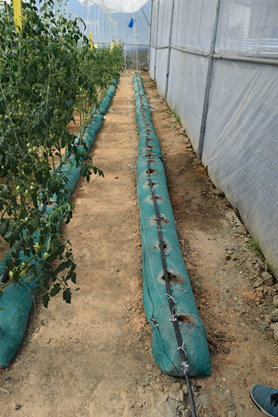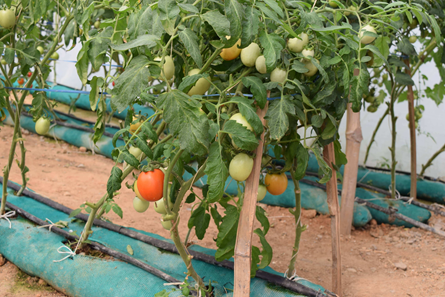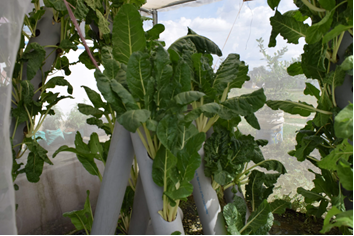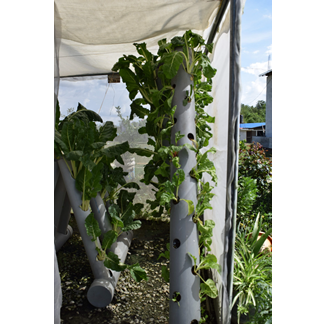Hydroponics in Nepal - low-cost systems
- Field Ready
- Jul 25, 2019
- 4 min read
Based on the work of Field Ready's Syrian team in 2017/18 Field Ready Nepal team members have been visiting local hydroponics sites in the Kathmandu valley to learn more on the development of low-cost, localised hydroponics systems.
Malnutrition poses a significant development challenge for children in Nepal in both rural and urban areas. According to one of the surveys from the Nepal Health Research Council’s 2014 Adolescent Nutrition survey, 71% of adolescent boys and 59% of the girls are malnourished. In addition, the 2015 earthquake in Nepal deeply affected communities in ways including loss of productive land, water sources changing and drying up, leading to reduced availability of growing space and therefore fresh fruits and vegetables. This is exacerbated by the effects of climate change, which has impacted Nepal’s rural farming communities heavily. Executive director of the Nepal Health Research Council, Dr Karki has highlighted the crucial role in reducing malnutrition access to fruits and vegetables plays, especially in Schools.
Field Ready in Nepal has started a project called “Green Fingers Nepal” focusing on the reduction of malnutrition in earthquake effected schools, through increasing intake of fresh fruits and vegetables grown in the schools using low-cost efficient hydroponic systems. For this project “Hydroponics Nepal Pvt. Ltd” a private company will be consulted on the installation of hydroponics systems in three different schools in three different locations. Field Ready have connected with Hydroponics Nepal to learn more about localising the Syrian systems developed for refugees in Syria/Jordan. Hydroponics Nepal have their own system/farm set at the rural locations of Tokha and Samakhushi (Inside Kathmandu valley).
Our Program Coordinator, Pradita Pradhan, writes:
Hydroponics farm in Tokha has been spread in an area of about 5 ropani (0.6 acer) of land. Mr. Prabin looks after the overall farm along with two other care takers. There are three proper structured system where as other local system is spread all over the area. Hydroponics system can be structured in different ways and the ways of watering those plants are also different.

Underground water is collected in a 5,000 litre tank which is transported to a 2,000 litre tank. There are two 2,000 litre tanks, where one tank is used to store nutrient water and the other one is used to store normal water. Nutrients are made in-house and are of two types; category A and B. Locally it's called by the color of these nutrients (Category A : Red and B: Green). About 4 grams of nutrients is mixed in 1 liter of water I.e. in every 2000 ltr of water, 8 kg of nutrients is mixed (4 kg each of nutrient A & B). First category B is mixed and after resting for some time, category A is mixed. The plants are watered with these nutrient waters about 3 –5 times a day. The watering system is all automated and the water flow is maintained using a pressure gauge maintaining the water flow at 2.5 bar. The water flow to a specific column is controlled by the valves placed at the starting of the column.

Inside every plant, there’s a temperature and a humidity sensor. Ideally, 32°C is suitable for the growth of the plants but during the hot summer days because the system is not high tech, the plastics covering the surrounding of the system are rolled up leaving it being covered by nets. The plastics used are of high quality which is also known as 5 Layers (thicker than normal plastics) which has a company warranty of 5 years).
There are variety of plants from different location (local areas like Bhaktapur, Asan to India) such as tomatoes, chilies, cucumber, spinach, lemon etc. which are planted using coco pit or sawdust (easily available and cheaper in Nepal). There are some experiment going around with using gravels and sand for plantation and it's proven to be a success. To prevent any harm from the insects, insectors are used and zero pesticides is used which makes these plants healthy.

There are number of birds like chicken, turkey and different plants grown to feed these birds. Barley and Corn seeds are grown and are fed to the birds and other domestic animals. Barley seeds are transported to the shed and in 4 days are fed to the birds and fed to the animals in 7 days. Similarly, the corn seeds are fed to the birds after 7 days of transport and fed to the animals in 11 days.
Farm has different systems. The vertical system is watered manually from the top, the plants using coco pit and sawdust are watered by the automatic system, the nutrient water is circulated and changed every 15 days in the horizontal system and
Below is another system called “Set and Forget” where basically the plants are set on the nutrient water and are not moved afterwards. This is supposed to be a low maintenance and input system.
Overall, this visit was incredibly helpful for the project team making the 3 hydroponic systems across the school sites in Nepal as part of the Green Fingers Nepal hydroponics project.

_edited.png)







